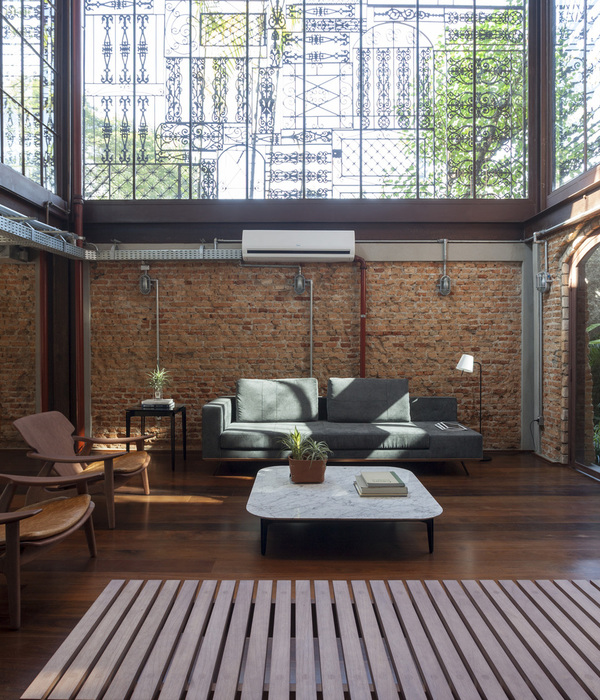农村城市框架的岭子底便民桥 | 促进自力更生的社区中心
非常感谢
Rural Urban Framework
Appreciation towards
Rural Urban Framework
for providing the following description:
中国的地区差异化在市场发展下已成为阻碍点,在偏远落后地区修建完善公共基础设施不仅增加新的就业机会也会给未来发展带来更多可能性。比如陕西某条公路建设通过之处破坏了上百条当地桥梁。这个新建便民桥项目发生在桥梁同样被破坏的岭子底村。
桥的设计主要是利用单环路衔接河堤的高差,并把河堤两岸连接。这样的设计一方面形成了宽阔、直接的行车通道供小型货车和摩托车来回两岸,另方面形成了一条人行道,让人们能够从桥下直达河边,方便钓鱼和日常的洗涤工作。荫蔽的台阶供村民坐下休憩。以前,河流把村民的聚落与农产品种植地分隔了。如今,村民在两岸间穿梭自如,并聚集在桥边做贸易生意,使桥成为村里的一个社交汇点。
尽管这道桥的尺度很小,它促进了当地农村掌握经济命脉。它亦鼓励村民不要光依靠儿女从工厂市镇寄回来的资金来过活,而是尝试自力更生,维持并改善当地的农村经济。
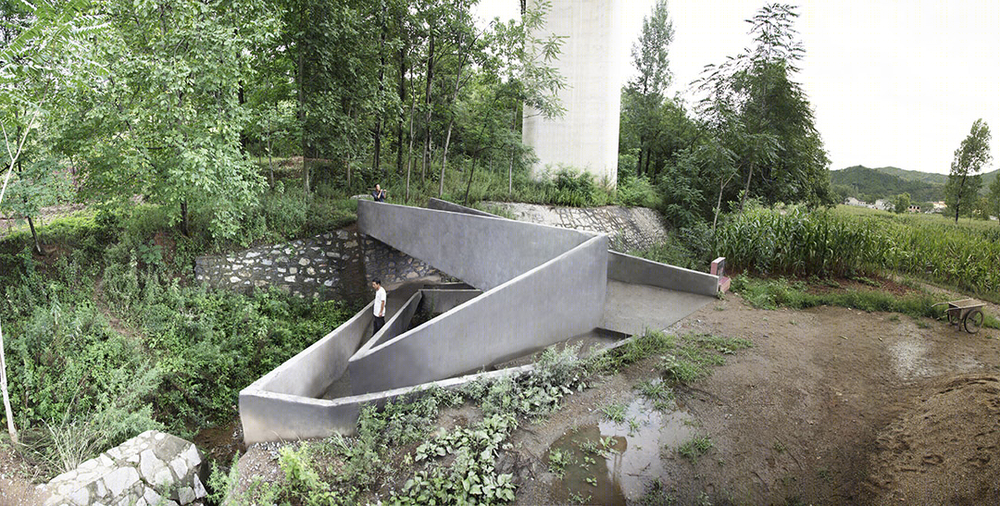
As part of the country’s urbanisation scene, China’s infrastructure construction leads to myriad consequences that significantly impact not only the economic conditions of the respective locality, but also its existing social matrices. One example, highway infrastructure, undoubtedly brings to remote areas increased accessibility and new employment opportunities. Yet at the same time, this top-down planning approach often overlooks the specific needs of the local area. Construction of a new highway in southern Shaanxi Province required the destruction of hundreds of local bridges. This project involves the design of a pedestrian bridge in Lingzidi Village to service the disrupted network.
The design of the bridge is a singular loop linking two levels of the riverbank and an additional arm connecting across the river. This produces a wide, direct path for small trucks and motorcycles and a pedestrian path that cuts under the bridge, allowing for access to the river for needs such as washing, cleaning, and fishing. Steps and shaded areas provide spaces for seating and relaxation. The river has long been an obstacle between the village settlement and the agricultural production farm. With the construction of this bridge, villagers are once again able to commute freely across the river, meeting at the bridge for trade and commerce.
Despite its small scale, this bridge is a critical link for the local village economy, emerging as a social hub and mitigating some of the many uprooting effects of large-scaled infrastructure construction. It encourages villagers to maintain and improve their local economy rather than rely on sources sent back from younger generations working in factory towns. Through its dyed cast-concrete, the bridge visually distinguishes itself form the adjacent, lighter grey highway viaduct, referencing subtly at the disparities between micro and macro approaches.
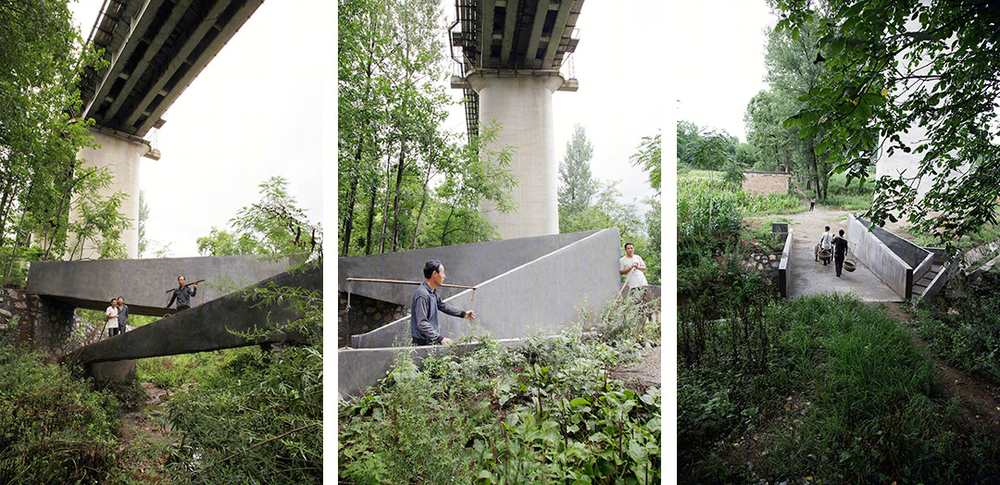


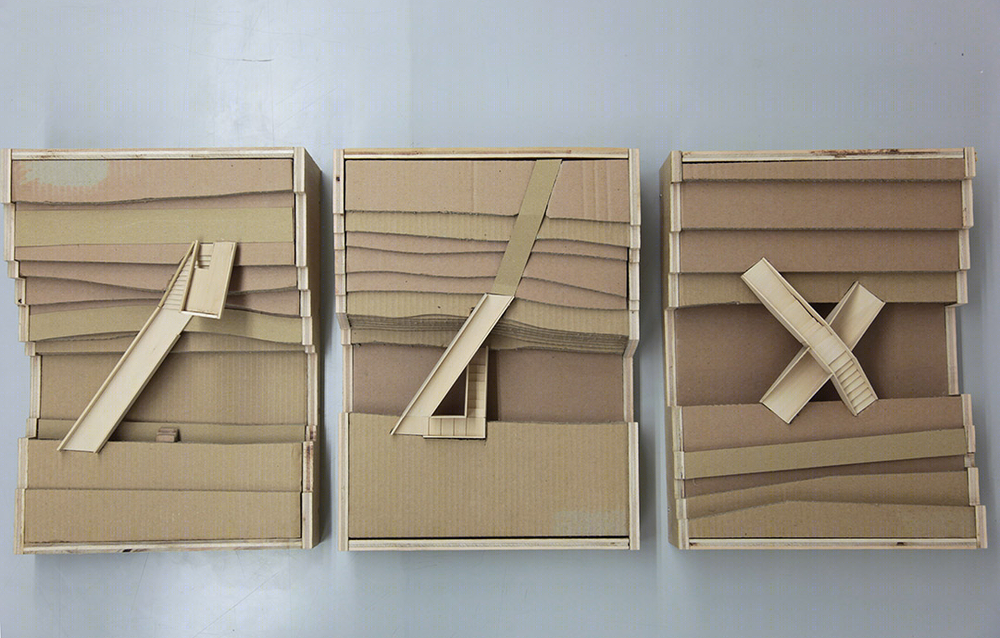

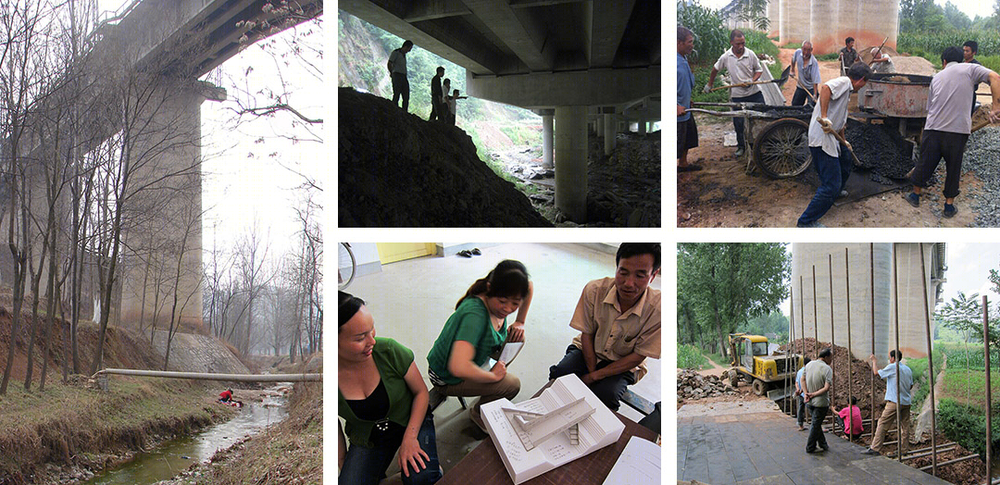
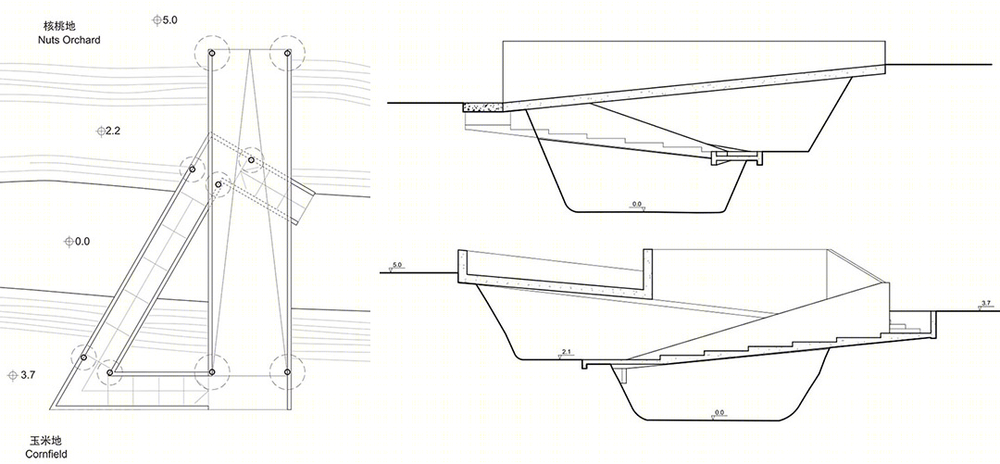
地点:中国陕西省商州区
设计:Joshua Bolchover与林君翰,城村架构
委托捐助者:香港世界宣明會
额外捐助者:香港陆谦受慈善基金
协作单位:宏輝建材及工程有限公司
项目团队:设计师:林君翰与Joshua Bolchover
城村架构是一个设在香港大学建筑学院的非牟利设计机构。
项目管理: 马洁怡
项目团队: 黄先觉,Mark Kingsley, 关帼盈,黄稚沄
摄影:城村架构
项目资料:
委托日期:2012年6月
竣工日期: 2012年9月
总面积:65平方米
总造价:170,000人民币
单位造价:2,600人民币/平方米
LOCATION:Shangzhou, Shaanxi Province, China
DESIGN:Joshua Bolchover and John Lin, Rural Urban Framework (RUF)
COMMISSIONING DONOR:World Vision
ADDITIONAL DONORS:Luke Him Sau Charitable Trust
PROJECT COLLABORATOR:Winview Building Materials & Services Co., Ltd.
CREDITS:Design: Joshua Bolchover and John Lin
Rural Urban Framework is a not-for-profit design agency based at the Faculty of Architecture, The University of Hong Kong.
Project manager: Maggie K Y Ma
Project team: Jeffery Huang, Mark Kingsley, Kwan Kwok Ying, Wendy Huang
IMAGE CREDITS:
Rural Urban Framework (RUF)
PROJECT DETAILS:
Commission Date: June 2012
Completion Date: September 2012
Size: 65 m2
Cost: 27,000 USD (170,000 RMB)
Unit Cost: 400 USD/sqm (2,600 RMB/sqm)
MORE:
Rural Urban Framework
,更多请至:




